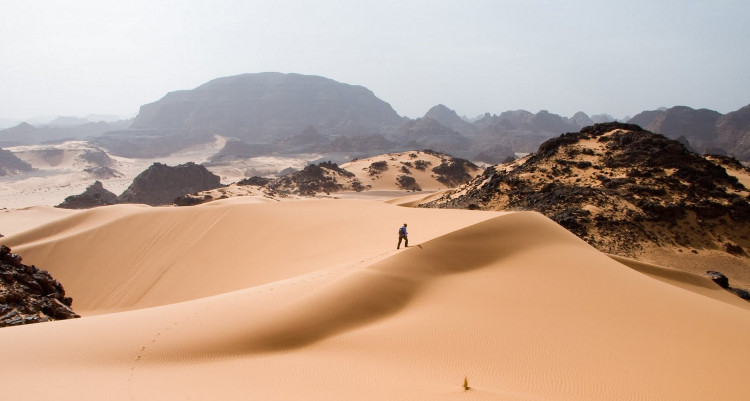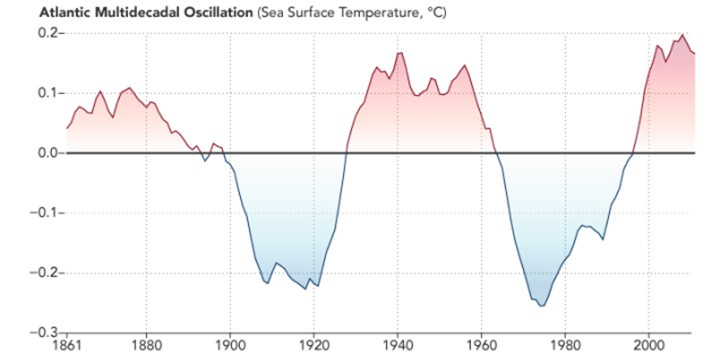What is going on with the Sahara?
The size of the Sahara is increasing, and this is not good at all.
According to Earther, with an area of about 9.2 million km² in northern Africa, the vast sand dunes and rocky plateaus of the Sahara are bigger than the United States. Recently, two scientists have come up with a shocking statement that the world's largest desert has expanded by 10% since the beginning of the 20th century , equivalent to the size of Texas.

The world's largest desert has expanded by 10% since the beginning of the 20th century.
This is not good at all! However, the experts Earther contacted were skeptical of the findings of the study, arguing that more research and data on the Sahara and the entire North African region would be needed. in general.
To track Sahara changes over time, the University of Maryland researchers used a global set of rainfall data, including rainfall patterns across Africa. According to them, if the rainfall is somewhere smaller than the region's average annual rainfall, that place is defined as the desert area. In this way, they discovered that in the period of 1920-2013, the Sahara desert expanded about 270,000 square miles (about 700,000km²).
According to a report by scientists published on March 29 in the Journal of Climate, this desertification is influenced by many factors such as the transition from hotter waters to the North Atlantic and AMO phenomenon (While tropical Atlantic region is warmer than normal, the North Atlantic is colder than normal, this will affect the Atlantic multi-decade fluctuation (Atlantic Multidecadal Oscillation - AMO) makes the storm season more active. These impacts take place over a period of 50 to 80 years. In addition, human-induced climate change is also thought to be a cause of desert expansion.
Co-author Sumant Nigam shared with Earther: "Both of these effects overlap and they all lead to the expansion of the Sahara, especially on the southern edge." He noted that when the AMO switched to a cold period in the 1950s, rainfall in the Sahel region of the southern Sahara desert was decreasing.

Since the late 1990s, when the AMO moved into the "warm" period.
According to NASA's Earth Association, since the late 1990s, when AMO switched to the "warm" phase, the Sahel had a warmer, wetter climate. But the study also concluded that climate change is the cause of widespread drought.
This is alarming, when tens of millions of " subsistence " farmers living in the Sahel region depend on rainfall to irrigate crops. Recent drought years have led to widespread famine affecting millions of people.
However, climate scientist Kevin Trenberth of the National Center for Atmospheric Research, who did not participate in the study, replied to Earther via email that the study was not sufficiently reliable because it collected data. sparse and heterogeneous rainfall in Africa.
In response to this criticism, Nigam affirmed that data quality issues "are always a concern of research". For this reason, the researchers focused on analyzing Sahara data after 1920 when rainfall in this area became relatively stable.
Pennsylvania climate scientist Michael Mann (also not involved in the study) said the statistical procedure used by the authors to determine AMO was "deadly flaw" and it affected to the final conclusion of the study.
Some other scientists look at research results from a more conservative perspective. Most agree that climate change research is linked to the poorest regions in the world and is also a premise for finding solutions to improve and overcome.
- Found rare sahara newspaper
- Found the true age of the Sahara desert?
- The wild world on the Sahara desert
- Little known facts about the Sahara desert
- Could it be that humans have turned the Sahara into a desert?
- Sahara wildlife is getting less and less
- The mystery of the Sahara jungle
- Many deserts ... water
- The culprit turns the Sahara prairies into arid deserts
- Discover the 'honey bee' island in the Sahara
- Snow falls over the Sahara
- Catch the Sahara desert
 'Fine laughs' - Scary and painful torture in ancient times
'Fine laughs' - Scary and painful torture in ancient times The sequence of numbers 142857 of the Egyptian pyramids is known as the strangest number in the world - Why?
The sequence of numbers 142857 of the Egyptian pyramids is known as the strangest number in the world - Why? History of the iron
History of the iron What is alum?
What is alum? Climate change could create more 'sky rivers' in East Asia
Climate change could create more 'sky rivers' in East Asia  Why when we see the weather forecast, we always see that they measure rainfall in millimeters?
Why when we see the weather forecast, we always see that they measure rainfall in millimeters?  10 places almost every day rain
10 places almost every day rain  Greenhouse gases increase extreme rainfall
Greenhouse gases increase extreme rainfall  Drought affects millions of Chinese people
Drought affects millions of Chinese people 